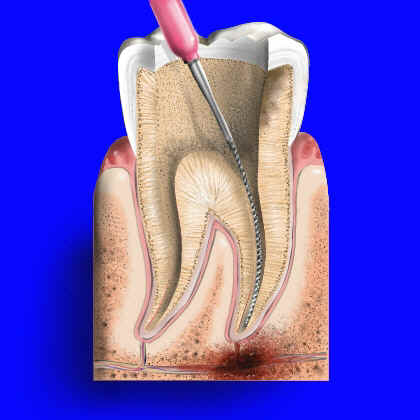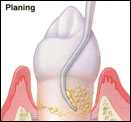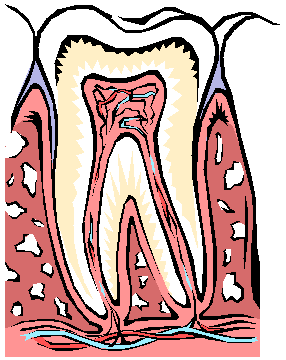North Richland Hills Dentist - Trinity Dental
Smile Big.
Laugh Often.
Trinity Dental.
Procedure Descriptions
|
Preventive |
X-rays, examinations
Routine cleanings, fluoride treatment
|
Restorative |
Porcelain Veneers and Cosmetic Bonding
Crown over implants
|
Endodontics |
|
Periodontics |
Gum treatment without surgery
|
Removable Prosthodontics |
Reline of partial or full dentures
Repairs to partial and complete dentures
|
Oral Surgery |
Routine extractions
Wisdom teeth extractions
Bone contouring in preparation for denture
|
Adjunctive Services |
Teeth whitening - We offer a professional teeth whitening system that you can take home and whiten your teeth at your convenience. This the simplest and most affordable way in which to brighten your smile. (Teeth Whitening Coupon - Click here)
Retainers - after braces
|
Emergency Services |
Sealants are a safe and painless way of protecting your children's teeth from dental decay. A sealant is a protective plastic coating, which is applied to the biting surfaces of the back teeth. The sealant forms a hard shield that keeps food and bacteria from getting into the tiny grooves in the teeth and causing decay. The process is usually quick and straightforward, taking only a few minutes per tooth. The tooth is thoroughly cleaned, prepared with a special solution, and dried. The liquid sealant is then applied and allowed to set hard - usually by shining an ultraviolet light onto it.

Space maintainers are an appliance made of plastic or metal custom fit to your child's mouth to maintain the space intended for the permanent tooth when it decides to come in. Unfortunately, some children lose baby teeth too early. A tooth may be knocked out accidentally or be removed due to severe disease. When this occurs, a space maintainer may be required to prevent future dental problems. Space maintainers encourage normal development of the jaw bones and muscles, and save space for the permanent teeth and help guide them into position. They do this by "holding open" the empty space left by a lost tooth by preventing movement in the remaining teeth until the permanent tooth takes it's natural position in the child's mouth. This treatment is much more affordable and much easier on your child than to move them back later with orthodontic procedures. Think of space maintainers as insurance against braces.
Tooth-Colored Fillings With the advent of the new tooth-colored filling material, it is now possible to replace those old, dark and ugly amalgam fillings with ones that blend with your own teeth and smile. And we can also replace gold and silver-colored crowns with ones that have a natural tooth coloring. Until recently, dentists filled and sealed cavities exclusively using a silver and mercury amalgam. Unfortunately, these fillings (or restorations) often weaken teeth due to the large amount of the original tooth that has to be removed. Modern dentistry has increasingly turned to composite fillings as a strong, safe and more natural looking alternative.
Porcelain Veneers and Cosmetic Bonding - We can dramatically transform your smile using these amazing cosmetic techniques! Whether to straighten your teeth without braces or to enhance the color and shape of your teeth, porcelain veneers and cosmetic bonding can greatly improve your smile and self-esteem. A veneer is a thin layer of porcelain made to fit over the front surface of a tooth, very much as a false fingernail fits over a nail. Sometimes a natural color 'composite' material is used instead of porcelain. Veneers make teeth look natural and healthy, and because they are very thin and are held in place by a special strong bond (rather like super-glue) very little preparation of the tooth is necessary. Cosmetic bonding is basically the process of filling or fixing teeth with a tooth-colored filling material in order to maintain appearance by way of a beautiful and natural smile. Tooth-colored fillings are made from durable plastics called composite resins. Similar in color and texture to natural teeth, the fillings are much less noticeable and much more attractive than other types of fillings.
A crown is a restoration that covers, or "caps," a tooth to restore it to its normal shape and size, strengthening and improving the appearance of a tooth. Crowns are necessary when a tooth is generally broken down and fillings won't solve the problem. If a tooth is cracked, a crown holds the tooth together to seal the cracks so the damage doesn't get worse. Crowns are also used to support a large filling when there isn't enough of the tooth remaining, attach a bridge, protect weak teeth from fracturing, restore fractured teeth, or cover badly shaped or discolored teeth. For individuals who wish to replace missing teeth, dental implant crowns may be an effective long-term solution. Implant crowns provide greater structural support and last longer than either bridges or dentures. Implants serve as the artificial root to which new implant crowns are bonded.
A bridge is a device used to fill the space where a tooth has fallen out or been removed. A typical bridge consists of a pontic (a filler tooth) that is attached to two surrounding crowns (abutments). Once complete, this bridge structure is bonded into the mouth. Without the use of a bridge, spaces in the mouth from missing teeth can cause multiple teeth to shift, lead to occlusion (biting) and/or jaw problems, and may spur periodontal disease. Bridges safeguard the integrity of existing teeth and help maintain a healthy, vibrant smile
Root Canal Treatment, (also called Endodontics) is needed when the blood or nerve supply of the tooth (known as the pulp) is infected through decay or injury. If the pulp becomes infected, the infection may spread through the root canal system of the tooth, which may eventually lead to an abscess. If Root Canal Treatment (RCT) is not carried out, the infection will spread and the tooth may need to be taken out.



Gum Disease Gum disease describes inflammation or infection of the tissues supporting the teeth. There are two main forms of gum disease: gingivitis and periodontal disease. For Americans in their 30's and beyond, the threat of gum disease (periodontal disease) is a very real and potentially dangerous condition. By the age of 40, over 70% of the nation's population has some stage of the disease. Although genetics may play a small role in its development, doctors agree that gum disease is directly related to how well one cares for their teeth and gums. Gum disease is particularly dangerous because the progression of the disease is often painless and undetected until it creates serious problems.
Gingivitis - Gingivitis means inflammation of the gums. This is when the gums around the teeth become very red and swollen, showing that the area is inflamed. Often this swollen gum bleeds when it is brushed during cleaning.
Periodontal disease - Long-standing gingivitis can progress to periodontal disease. There are a number of forms of periodontal disease and they all affect the supporting structures of the teeth. As the disease progresses the bone anchoring the teeth in the jaw is lost, making the teeth loose. If this is not treated, the teeth may eventually fall out.
Scaling and Root Planing is a special type of treatment that goes deep below the gum line to remove contaminated debris, pus, and bacteria. Scaling is procedure that meticulously removes contamination toxins, micro-organisms, plaque, tartar, cementum, dentin that is rough and/or permeated by calculus from around, below and under the gum line down to the bottom of the pocket. Root planing involves smoothing the root surfaces of your teeth with thin curettes so gum tissue can more firmly reattach to roots that are clean and smooth to prevent tooth loss and sensitivity problems.



Partial Dentures - This is a plate with a number of false teeth on it. It may be all plastic or a mixture of metal and plastic. Both types may have retaining clips (clasps), to help keep the denture in place in the mouth. Depending on where they are, some of these clips may be visible when you smile or open your mouth. Plastic partial dentures are less expensive to make but unless they are designed very carefully they can damage the teeth they fit against. Metal partial dentures are usually made from an alloy of cobalt and chromium and they are much stronger. They are lighter to wear and can be supported by the remaining teeth. Although the base is metal, they have gum-colored plastic and natural-looking teeth fixed to them. They are more expensive than the plastic ones.
Full Denture - A denture is an appliance which is worn to replace lost or missing teeth to enable you to enjoy a healthy diet and smile with confidence. A complete or full denture is one which replaces all of the natural teeth in either the upper or lower jaws. A partial denture fills in the spaces created by lost or missing teeth and is attached to your natural teeth with metal clasps or devices called precision attachments.
A denture reline is needed when the upper denture starts to fall down, or the lower denture will not stay in place and comes up. A reline involves resurfacing only the internal or gum side of the denture to achieve a closer fit with the soft tissues. Denture relines are done in order to increase retention of existing dentures and to avoid the necessity and cost of remaking the denture. The reason for the loss of retention is that small changes have been occurring in the supporting tissue over time. These changes can be caused by jaw bone resorption (bone loss), infection, or age and condition of denture. There are three types of denture relines – hard, soft and temporary.
Occlusal splint - Rigid or flexible appliances that overlay the occlusal (biting surface) surfaces of the teeth. They are used to treat clenching and bruxism and their sequelae, and to provide temporary relief from muscle or temporomandibular joint pain
A night guard is a thin piece of hard plastic made from impressions of your teeth that is placed on the upper teeth. The night guard is hard enough to be durable but it is softer than teeth and protects them from wear. Grinding and clenching of teeth is called ”bruxism”. This type of condition is referred to as a nonfunctional habit of the jaws. Grinding of teeth can occur while awake or asleep. Grinding your teeth while asleep is often a bit of a problem. First of all, you can’t control nighttime grinding. Bruxism while asleep is a very common sleep behavior that a many people will experience at some time in their lives, especially during the times of stress.
Anti-snoring device - During sleep, the muscles and soft tissue in the throat and mouth relax, making the breathing airway smaller. This decrease in the airway space increases the velocity of air flowing through the airway during breathing. As the velocity of required air is increased in the constricted space, soft tissues like the soft palate and the uvula vibrate, which causes snoring. Snoring research has shown that custom fabricated dental devices worn at night that move the lower jaw into a forward position, increase the three dimensional space in the airway tube, which reduces air velocity and soft tissue vibration. In this way, snoring can be eliminated. The success rate of such devices ranges from 70-100%. The Silent Nite appliance is the most comfortable of the appliances we have found. It positions the lower jaw into a forward position by means of special connectors that are attached to transparent flexible upper and lower forms. The forms are custom laminated with heat and pressure to the dentist's model of the mouth. The fit is excellent and comfortable.
Sports guard - A sports guard/mouthguard is a specially made, rubber-like cover which fits exactly over your teeth and gums, cushioning them and protecting them from damage. Mouthguards should be worn while playing any sport that involves contact or the possibility of falling.

